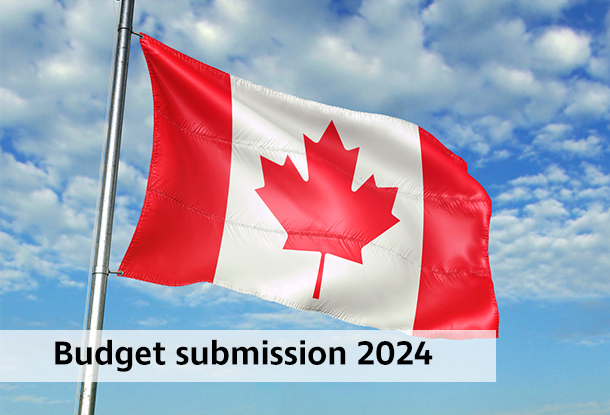Marco Levytsky, Editorial Writer.
With background provided by NP-UN Board Director Darka Tarnawsky
The Canadian arts sector, performing arts in particular, have been hard hit by the Coronavirus pandemic and the restrictions put in place to contain it. And this is not likely to go away for some time.
For one thing, even if public performances are to be allowed in the opening stages of the easing of restrictions, capacity is severely limited by physical distancing rules. To maintain a two-metre distance between audience members, venues can only be filled to about 30 per cent capacity – which effectively makes any kind of public concerts or other performances economically unfeasible. One could conceivably triple ticket prices in order to close that gap, but when we are going through the biggest economic crisis since the Great Depression, who’s going to pay such high prices? Public choral performances are virtually impossible because there is not enough space on a stage to maintain safe distance. And no one is really sure what a safe distance is, but it is definitely more than six metres. According to the Government of Alberta: “Singing is a high-risk activity because infected people can transmit the virus through their saliva or respiratory droplets… There is no evidence to determine exactly what a safe distance would be between singers and others, but greater distances can reduce risk.”
What that means is that in order to be both safe and economical, any kind of public performances will have to be delayed until such time as “herd immunity” sets in, meaning either enough people have been infected with COVID-19 and recovered or, a vaccine is in place. Even though we have seen remarkable and unprecedented progress in developing such a vaccine, no vaccine can be in place until it has been thoroughly tested and that is a process that takes time. The most optimistic forecasts point to early January, but the general consensus says it will be later in the following year – maybe even towards the end.
For our own community this has serious repercussions. Ukrainian identity throughout Canada is very visible and largely represented by the myriad of talented performing artists and organizations such as Ukrainian choirs, dance ensembles, and festival presenters. But how much help can we expect from the federal government to weather this storm? The answer is very little – if any.
The federal government has announced $500 million in support for arts, culture and sports. These funds are to be distributed in two phases. The breakdown for the first phase is as follows:
- $198.3 million will be allocated to the arts and culture sector through existing funding programs at Canadian Heritage.
- $53 million will be provided to the heritage sector through the emergency component of the Museums Assistance Program.
- $3.5 million will be provided for COVID-related projects under the Digital Citizen Initiative.
- $55 million will be distributed through Canada Council for the Arts (CCA) in order to help artistic organisations that support artists.
- $72 million will be provided to the sport sector
- $115.8 million will support the Canadian audiovisual sector through the Canada Media Fund ($88.8 million) and Telefilm Canada ($27 million).
No Ukrainian performing arts groups are eligible for the $198.3 million that is to be allocated through existing funding programs at Canadian Heritage, because that only applies for those groups which are fully professional, which means performers make their living from their work. The closest that any Ukrainian Canadian performing group gets to meeting these qualifications is the Ukrainian Shumka Dancers. But they are only semi-professional – not fully professional. Their members are paid for their work, but not enough to live on. Therefore, they must supplement their income with other jobs. All other Ukrainian performing arts groups in Canada are amateur, thus not even close to eligibility.
Somewhere in Phase Two there may be some funding, though how much remains up in the air. Ukrainian Canadian groups may qualify under the bottom section which reads: “Funding for other organizations, which may include some that do not currently receive funding from Canadian Heritage, the Canada Council for the Arts, Telefilm Canada or the Canada Media Fund (e.g., non-recipient arts and culture organizations, small broadcasters, third-language producers, organizations in live music, local news organizations, magazines and community newspapers).” But the government website also states: “As part of the $500 million budget envelope, the second phase will provide temporary support as follows…”
When you add up the amounts listed in Phase One, the total comes to $497.6 million, leaving only $2.4 million to spare. If there is to be any tangible support for those organizations that may be assisted through Phase Two of the program, then additional funding must be provided.
Ukrainian culture has long-ago broken through the ethnic ghetto to which it once belonged. It has become an integral part of Canadian culture – particularly in the West, where Ukrainians can be considered a regional founding nation in that they came to a wilderness, cleared it and created thriving settlements. And it is Ukrainians who are primarily responsible for initiating our policy of multiculturalism.
Paul Yuzyk, a Progressive Conservative Senator of Ukrainian descent, referred to Canada as “a multicultural nation” in his influential maiden speech in 1964, creating much national debate, and is remembered for his strong advocacy of the implementation of a multiculturalism policy. On October 8, 1971, Prime Minister Pierre Elliot Trudeau announced in the House of Commons that, after much deliberation, the policies of bilingualism and multiculturalism would be implemented in Canada. The next day, Prime Minister Trudeau reiterated the Canadian government’s support for this policy at the 10th Congress of the Ukrainian Canadian Committee (now Congress) in Winnipeg. When the Canadian Constitution was patriated by Prime Minister Trudeau in 1982, one of its constituent documents was the Charter of Rights and Freedoms, and section 27 of the Charter stipulates that the rights laid out in the document are to be interpreted in a manner consistent with the spirit of multiculturalism. (As a side note here, the late Ukrainian Canadian leader Laurence Decore played a very major role in getting this section enshrined.) The Canadian Multiculturalism Act was introduced during the Progressive Conservative government of Brian Mulroney, and received Royal Assent on July 21, 1988. Among other things the act calls upon the Government of Canada to “recognize and promote the understanding that multiculturalism is a fundamental characteristic of the Canadian heritage and identity and that it provides an invaluable resource in the shaping of Canada’s future.”
Although, as a Ukrainian Canadian community newspaper, we understandably focus on issues primarily from our own community’s perspective, what we say about Ukrainian Canadian cultural groups applies equally to all ethnocultural groups in Canada. Pierre Elliot Trudeau recognized Canada’s diversity by first announcing multiculturalism as a policy, then enshrining it in the Constitution. It’s up to his son, Justin, to ensure that multicultural arts groups of all stripes not be allowed to fall through the cracks during this pandemic crisis.
Share on Social Media


































